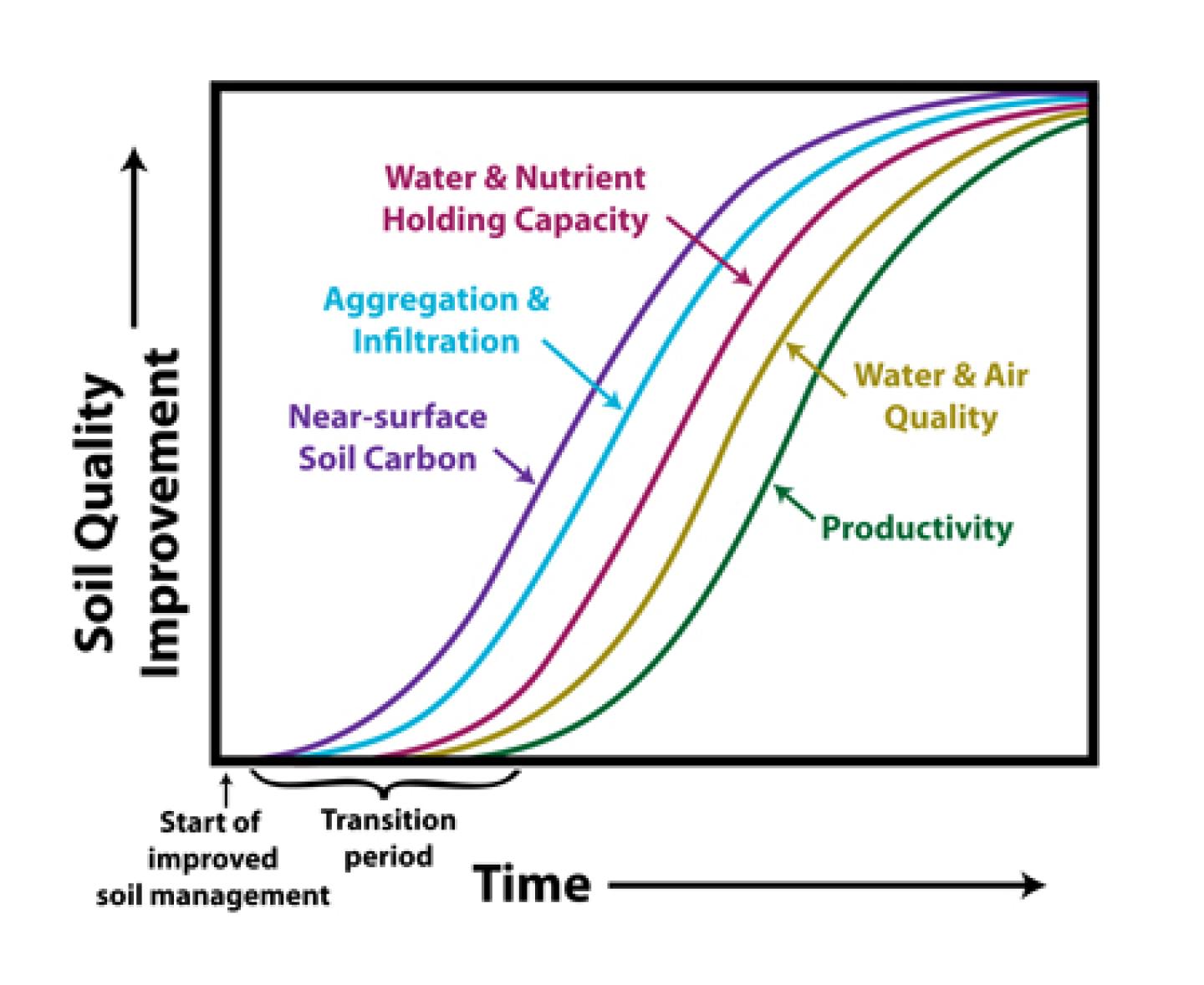
Once a land manager begins working towards enhancing soil organic matter, a series of soil changes and environmental benefits follow.
Once a land manager begins working towards enhancing soil organic matter, a series of soil changes and environmental benefits follow. The rate and degree of these changes and the best suite of practices needed to achieve results vary with soil and climate. Initially, managing for greater soil organic matter may require higher pesticide, herbicide, or nutrient applications. In time, productivity and environmental quality will be enhanced.
1. Apply practices that enhance soil organic matter
- Diverse, high biomass crop rotations
- Cover crops
- Reduced tillage
- Rotational or prescribed grazing
2. Organic matter dynamics change
- Increased surface residue forms a physical barrier to wind and water erosion.
- Higher residue rotations and cover crops contribute more organic matter and nutrients to the soil.
- Less soil disturbance means lower organic matter losses.
3. Soil properties change
- Surface structure becomes more stable and less prone to crusting and erosion.
- Water infiltration increases and runoff decreases when soil structure improves.
- Soil organic matter holds 10 to 1,000 times more water and nutrients than the same amount of soil minerals.
- Beneficial soil organisms become more numerous and active with diverse crop rotations and higher organic matter levels.
4. Air quality, water quality, and agricultural productivity improve
- Dust, allergens, and pathogens in the air immediately decline.
- Sediment and nutrient loads decline in surface water as soon as soil aggregation increases and runoff decreases.
- Ground and surface water quality improve because better structure, infiltration, and biological activity make soil a more effective filter.
- Crops are better able to withstand drought when infiltration and water holding capacity increase.
- Organic matter may bind pesticides, making them less active. Soils managed for organic matter may suppress disease organisms, which could reduce pesticide needs.
- Crop health and vigor increase when soil biological activity and diversity increase.
- Wildlife habitat improves when residue management improves.



